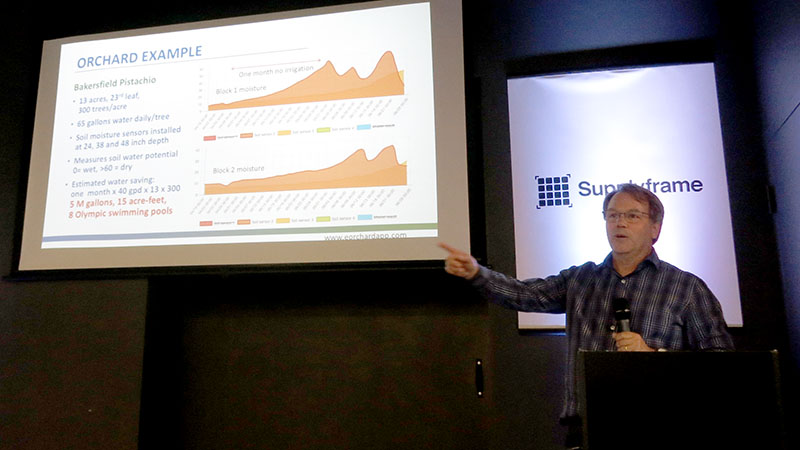Our five rounds of Hackaday Prize 2018 challenges have just wrapped up, and we’re looking forward to see where the chips fall in the final ranking. While we’re waiting for the winners to be announced at Hackaday Superconference, it’s fun to take a look back at one of our past winners. Watch [Reinier van der Lee] give the latest updates on his Vinduino project (video also embedded after the break) to a Hackaday Los Angeles meetup earlier this year.
Vinduino started with [Reinier]’s desire to better understand what happens to irrigation water under the surface, measuring soil moisture at different depths. This knowledge informs more efficient use of irrigation water, as we’ve previously covered in more detail. What [Reinier] has been focused on is improving usability of the system by networking the sensors wirelessly versus having to walk up and physically attach a reader unit.
His thought started the same as ours – put them on WiFi! But adding WiFi coverage across his entire vineyard was not going to be cost-effective. After experimenting with various communication schemes, he has settled on LoRa. Designed to trade raw bandwidth for long range with low power requirements, it is a perfect match for a network of soil moisture sensors.
In the video [Reinier] gives an overview of LoRa for those who might be unfamiliar. Followed by results of his experiments integrating LoRa functionality into Vinduino, and ending with a call to action for hackers to help grow the LoRa network. It sounds like he’s become quite the champion for the cause! He’s even giving a hands-on workshop at Supercon where you can build your own LoRa connected sensor. (Get tickets here.)
We’re always happy to see open-source hardware projects like Vinduino succeed, transitioning to a product that solve real world problems. We know there are even more promising ideas out there, which is why Hackaday’s sister company Tindie is funding a Project to Product program to help this year’s winners follow in Vinduino’s footsteps. We look forward to sharing more success stories yet to come.















LoRa is more hacker friendly because you can set up your own base station and network infrastructure, but the hardware is more expensive because it’s proprietary to a single company.
Wrapped in patents basically.
Are there cheaper alternatives the give the same range with the same power requirements?
Is it really that different from using an RF69 (SX1231) module? Or an nRF24 module?
What MCU do you use, an esp8266 or esp32 perhaps? Or is an stm32 more open source than the radio?
I’d like to use LoRa to put a sensor on a barn door 2 km from my house. Once the house equipment gets the signal that the the door is opened the next step is to notify my Android phone. What tools will achieve the first part of this (LoRa signal from barn door to house)? Rough cost estimate?
A pair of RN2483 and 2 micros of your choice, or 2 arduinos/blue pills, not even 50€.
Try this: https://www.iotinabox.com/cart-share/gHGAQ
Ethernet LoRaWAN Gateway + Netvox Door Sensor + IoT in a Box Android/iPhone app.
That’s all you need & all comes preconfigured & ready to use.
Unless your barn is in Asia or Australia, in which case you’re SOL. It’s ironic that the half of the world where most of these devices are manufactured are pretty much barred from legally using them (yes, I know that some devices do cover the CN/AS/AU bands, but they’re like hens teeth …and according to the spec sheet, the RN2483 isn’t one of them).
s/are/is/